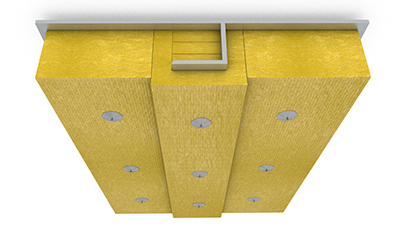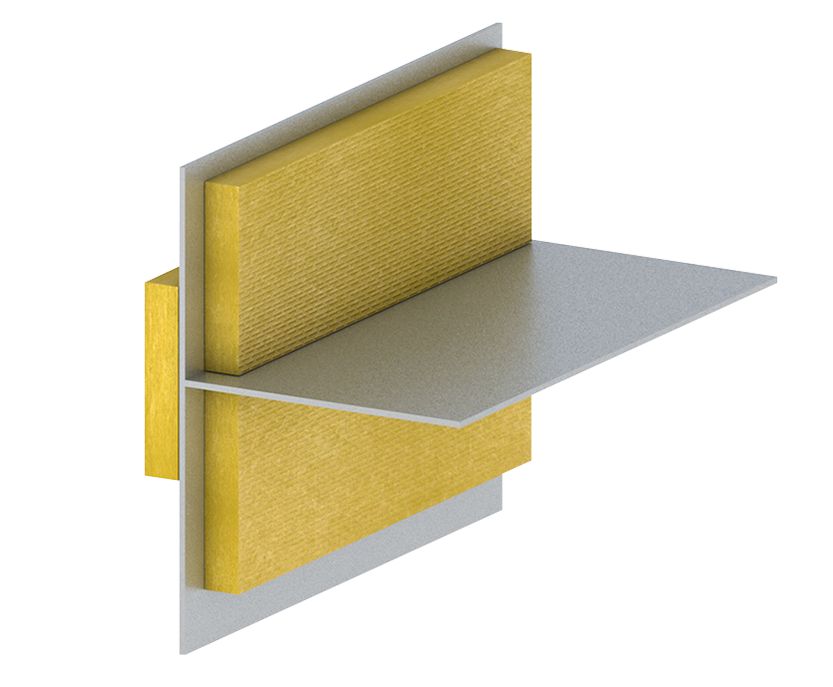

◎ Plate between stiffeners insulated with one layer of 75mm ABM-FR60.
◎ Stiffeners insulated with one layer of 25mm ABM-FR60.
◎ Standard steel plate thickness 4.5(±0.5)mm.
◎ Insulations secured with pins of ?3mm and washers of ?30mm at approximate 300mm/400mm distance.
◎ Fire can be against insulation or steel either.
◎ All connections must be tight, no air gaps.
◎ The gap under the stiffeners must be filled with insulations completely
◎ The pins shall exceed the insulation at about 10mm.
◎ One layer solution, easy handling and fast installation
◎ Light weight
◎ Rw=49dB
It is a non-combustible thermal insulation material with good thermal insulation performance, moisture-proof and water-repellent performance, acoustic insulation. It is suitable for marine application. View the Schematic Diagram.

1.25.5, Chapter 2-2, Part 4, Technical rules for legal Inspection of domestic seagoing vessel (2011), clarifies the extension requirements of insulation materials at the joint and termination points of the structures:
When designing the details of fireproof structure, the risk of thermal transfer at the joint and termination points should be considered. For decks or bulkheads with steel structures, the insulation should be extended at least 450mm over the penetration, joint or termination point. If there are different insulation classes in a place separated by Class A Standard deck or bulkhead, the high-class insulation should be extended at least 450mm over the deck or bulkhead which is with low-class insulation. (According to MSC.Circ 1120)
At the joint of A-60 and A-0 structures, the insulation should be extended at least 450mm on the A-0 structure, and the extension part should have the same insulation performance as A-60, thereby reducing the influence of thermal bridges.

In addition, according to the actual installation requirements on site, if it can make sure of reducing thermal transfer, another installation form can also be selected, that is, a 900mm extension installed on the reverse side of the structure (450mm on both sides is appropriate).

If penetrating the Class A partition, the penetrating sleeve should be made of steel or equivalent material with a thickness in 3mm and above , length longer than of 900mm (450mm on both sides is appropriate), no openings. Meanwhile the wrapping and extension of the penetrating part should be use the same level of insulation material as the Class A partition for proper insulation.


